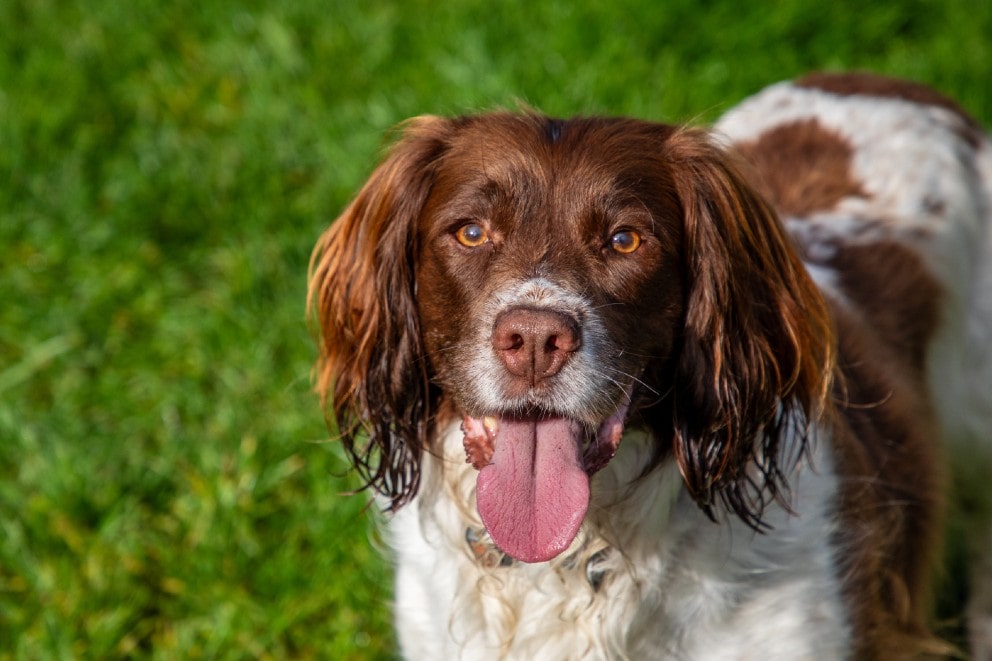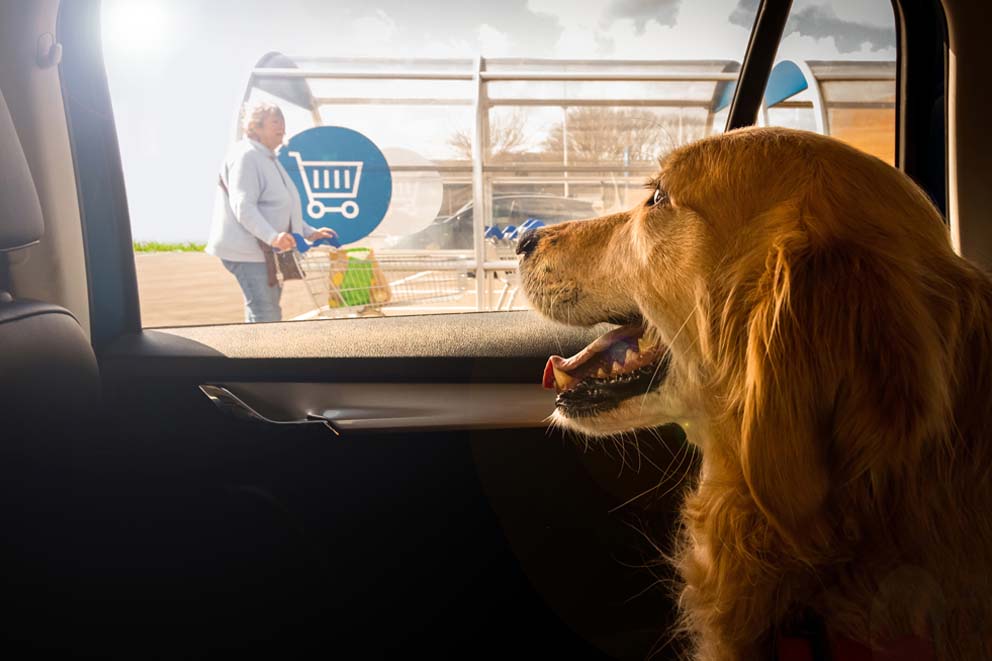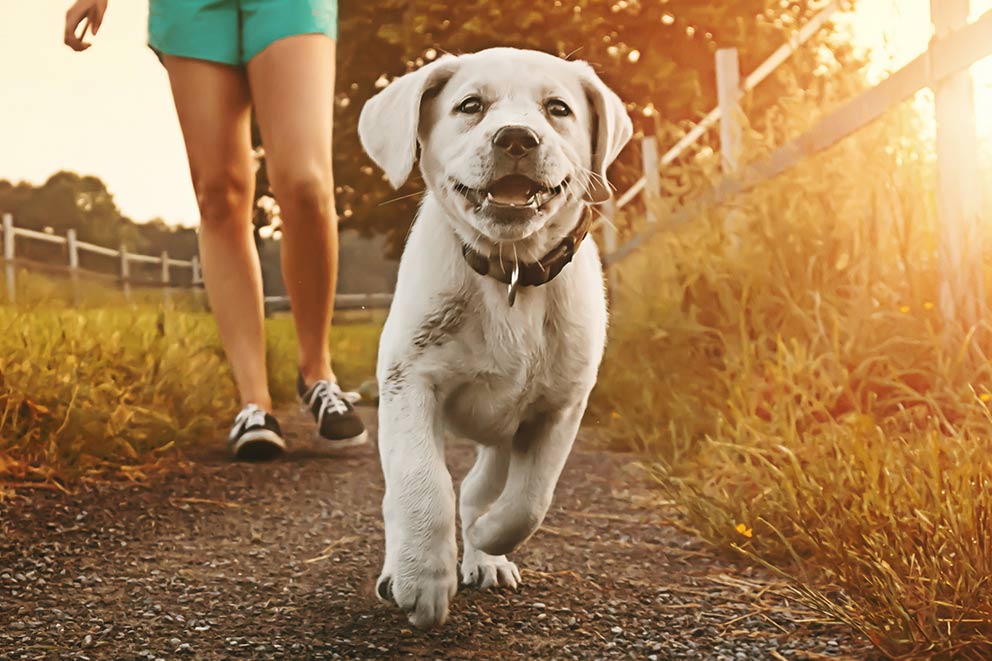Heatstroke in dogs
When a dog gets too hot and can’t lower its temperature by panting, it can develop heatstroke. This can be fatal, so you need to act fast to reduce their body temperature first, then get help. On this page you’ll learn how to cool a dog down safely, to save their life.

Signs of heatstroke in dogs
Risk factors
Some dogs are more at risk of heatstroke than others, due to:
- Health conditions: especially those that affect their respiratory system, which dogs rely on to keep cool.
- Thick coats: dogs lose heat through their bodies, but thick fur can trap the heat in.
- Age: puppies and senior dogs aren’t as able to regulate their temperature.
- Breed: certain brachycephalic (flat-faced) dog breeds are unable to pant as effectively, due to their shorter snouts.
Symptoms
Look out for the following symptoms of heatstroke in dogs:
- Collapse: heat exhaustion, when severe, could cause the dog to collapse.
- Confusion or disorientation: dehydration might make the dog lightheaded or dizzy, affecting their movements.
- Dehydration: this can present as a dry nose, sunken eyes, heavy panting, infrequent urination, and tiredness.
- Drooling: if the dog is drooling more often, and it’s thicker and stickier, this could be a symptom of heatstroke.
- Increased heart rate: check a dog’s heartbeat by placing your hand on their chest, just behind their front leg’s elbow. A fast pulse could signal overheating (remember that the dog’s size affects their resting heart rate: big dogs have slower pulses, whereas small dogs have quicker pulses).
- Muscle spasms: these heat cramps are often associated with dehydration, and might appear as shivering and shaking despite the high temperatures.
- Noisy breathing: breathing noisily or faster than normal, especially if the dog is a flat-faced breed, is a sign of overheating.
- Panting: dogs cool down by panting, so the more they pant, the hotter they are.
- Red gums and tongue: whilst this is often a symptom of a dental problem, when coupled with panting and heavy breathing, red gums can occur when a dog is overheating.
- Seizures: heatstroke, especially in dogs with epilepsy, can trigger seizures and loss of consciousness.
- Vomiting and diarrhoea: stool that’s softer than normal can be a symptom of heat exhaustion. Stool and diarrhoea that contains blood is a sign that the heatstroke has become more severe.
- Weakness and lethargy: the dog might sleep more, have trouble standing or walking, or generally seem more sluggish with their movements.
Now you know how to tell if a dog is overheating – learn what to do to prevent and reduce the effects.
What to do if your dog is overheating
The best thing to do when your dog is overheating is cool first, transport second. This means acting fast to stop further heating, cooling the dog down, and then taking them to your nearest vet.
STOP further heating
- Prevent the dog from heating up even more by stopping exercise or movement.
- Remove the dog from hot vehicles or buildings.
- Get the dog out of the sun, away from anything that’s exposing them to heat, and into shade – or create shade where possible.
COOL the dog
- Pour any available water – that’s cooler than the dog’s temperature – over their body, but avoid their head (the dog will already be struggling to breathe, so pouring water over their head could worsen this). Focus on their neck, stomach and thighs.
- Submerge their body in cool water if available (such as a paddling pool or stream, as long as the water temperature is cooler than the dog). Don’t attempt this on an unconscious dog, a dog with health conditions, or an elderly dog – for these dogs, spray them with room temperature water.
- Create a breeze by fanning the dog.
TRANSPORT to a vet
- Once the dog’s temperature has cooled, take them to your nearest vet. Ensure they’re travelling in a cooled, well-ventilated vehicle (with air-con on or windows open), to continue lowering their temperature on the journey, providing water where possible.
- Call ahead to inform your vet about the urgency of the situation.
Remember: Cool first, transport second. The longer the dog is overheated, the more damage it can cause to their health, possibly even killing them. Cool the dog immediately to improve their chances of recovery.
Try to stay calm and think clearly. Stay focused on the dog and remind yourself that you are capable of saving a life.
Keep your cool, keep them cool.
Contrary to popular belief, cold water rarely causes shock in over-heating dogs - dousing or immersing the over-heated dog in cold water is vital to their recovery.
Report a concern
See a dog in a hot car displaying any signs of heatstroke? Dial 999 immediately and stay with the dog to monitor their condition until help arrives.




